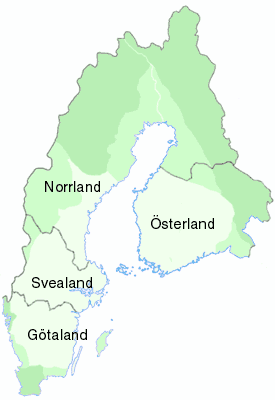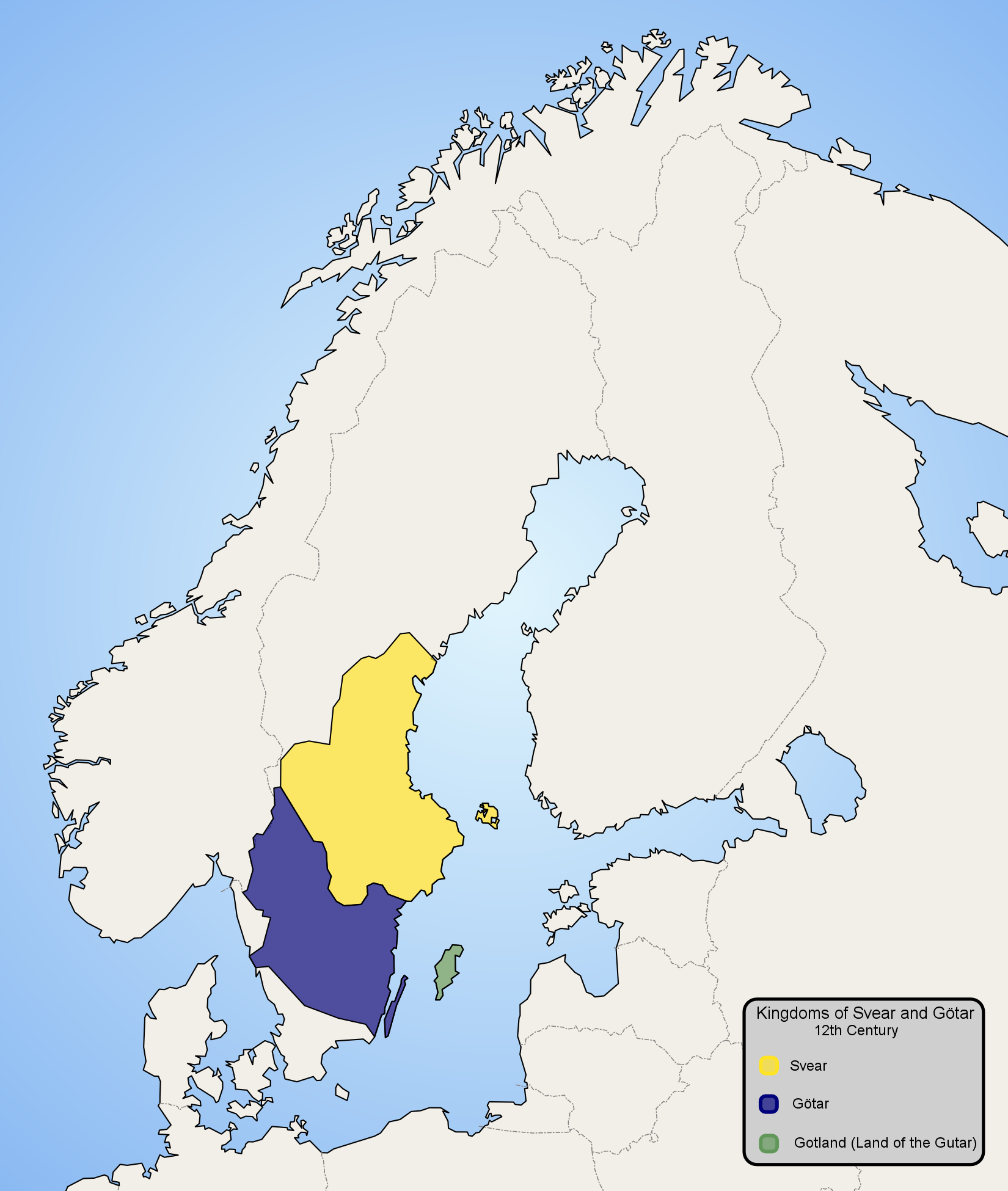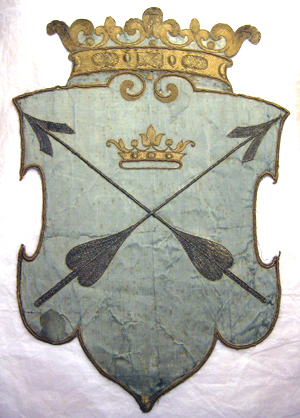|
Svealand
Svealand (), or Swealand, is the historical core region of Sweden. It is located in south-central Sweden and is one of the three historical lands of Sweden, bounded to the north by Norrland and to the south by Götaland. Deep forests, Tiveden, Tylöskog, and Kolmården, separated Svealand from Götaland. Historically, its inhabitants were called , from which is derived the English 'Swedes'. Svealand consists of the capital region Mälardalen in the east, Roslagen in the north-east, the former mining district Bergslagen in the center, and Dalarna and Värmland in the west. It includes an extensive archipelago of thousands of small islands in Södermanland and Uppland and has lakeshores on the four largest lakes in the country. In the interior, there are several ski resorts in the southern parts of the Scandinavian Mountains. Two large rivers run through Svealand. Klarälven originates in Norway and enters lake Vänern through Värmland, whereas Dalälven runs from ... [...More Info...] [...Related Items...] OR: [Wikipedia] [Google] [Baidu] |
Götaland
Götaland (; also '' Gothia'', ''Gothland'', ''Gothenland'' or ''Gautland'') is one of three lands of Sweden and comprises ten provinces. Geographically it is located in the south of Sweden, bounded to the north by Svealand, with the deep woods of Tiveden, Tylöskog and Kolmården marking the border. Götaland once consisted of petty kingdoms, and their inhabitants were called ''Gautar'' in Old Norse. However, the term mainly referred to the population of modern Västergötland. It is agreed that these were the same as the ''Geats'', the people of the hero Beowulf in England's national epic, ''Beowulf''. The modern state of Sweden started forming when some provinces of Götaland gradually became more and more politically intertwined with those of Svealand. This process can be traced back to at least the 10th century, and would continue for several hundred years. Other parts of modern Götaland were at that time either Danish or Norwegian. The province of Småland, with ... [...More Info...] [...Related Items...] OR: [Wikipedia] [Google] [Baidu] |
Swedes (Germanic Tribe)
The Swedes (; Old Norse: ''svíar,'' ) were a North Germanic tribe who inhabited Svealand ("land of the Swedes") in central Sweden. Along with Geats and Gutes, they were one of the progenitor groups of modern Swedes. They had their tribal centre in Gamla Uppsala. The Roman historian Tacitus was the first to write about the tribe in his ''Germania'' from AD 98, referring to them as the ''Suiones''. Locally, they are possibly first mentioned by the Kylver Stone in the 4th century. Jordanes, in the 6th century, mentions ''Suehans'' and ''Suetidi''. These names likely derive from the Proto-Indo-European root * s(w)e, meaning "one's own". ''Beowulf'' mentions the Swedes around 1000 A.D. According to early sources such as the sagas, especially '' Heimskringla'', the Swedes were a powerful tribe whose kings claimed descendence from the god Freyr. During the Viking Age they constituted the basis of the Varangian subset, the Norsemen that travelled eastwards (see Rus' people). The ... [...More Info...] [...Related Items...] OR: [Wikipedia] [Google] [Baidu] |
Lands Of Sweden
The lands of Sweden () are three traditional and historical regions of the country, each consisting of several provinces. The division into lands goes back to the consolidation of Sweden, when ''Götaland'', the land of the Geats, merged with ''Svealand'', the land of the Swedes, to form the country, while ''Norrland'' and '' Österland'' (the latter now Finland) were added later. The lands have no administrative function but are still seen by many Swedes as an important part of their identity. Subdivision * Götaland (''Gothenland'' or ''Gothia'', "Land of the Geats") is the southernmost, most densely populated part, consisting of ten provinces. * Svealand (''Swealand'', "Land of the Swedes") is the central, and smallest of the three lands, with six provinces; the administrative centre of Sweden has been situated here at least since the late Middle Ages. * Norrland (literally "Northland") is the northernmost, and largest, of the three lands, covering 60 percent of the total land ... [...More Info...] [...Related Items...] OR: [Wikipedia] [Google] [Baidu] |
Sweden
Sweden, formally the Kingdom of Sweden, is a Nordic countries, Nordic country located on the Scandinavian Peninsula in Northern Europe. It borders Norway to the west and north, and Finland to the east. At , Sweden is the largest Nordic country by both area and population, and is the List of European countries by area, fifth-largest country in Europe. Its capital and largest city is Stockholm. Sweden has a population of 10.6 million, and a low population density of ; 88% of Swedes reside in urban areas. They are mostly in the central and southern half of the country. Sweden's urban areas together cover 1.5% of its land area. Sweden has a diverse Climate of Sweden, climate owing to the length of the country, which ranges from 55th parallel north, 55°N to 69th parallel north, 69°N. Sweden has been inhabited since Prehistoric Sweden, prehistoric times around 12,000 BC. The inhabitants emerged as the Geats () and Swedes (tribe), Swedes (), who formed part of the sea-faring peopl ... [...More Info...] [...Related Items...] OR: [Wikipedia] [Google] [Baidu] |
Lands Of Sweden
The lands of Sweden () are three traditional and historical regions of the country, each consisting of several provinces. The division into lands goes back to the consolidation of Sweden, when ''Götaland'', the land of the Geats, merged with ''Svealand'', the land of the Swedes, to form the country, while ''Norrland'' and '' Österland'' (the latter now Finland) were added later. The lands have no administrative function but are still seen by many Swedes as an important part of their identity. Subdivision * Götaland (''Gothenland'' or ''Gothia'', "Land of the Geats") is the southernmost, most densely populated part, consisting of ten provinces. * Svealand (''Swealand'', "Land of the Swedes") is the central, and smallest of the three lands, with six provinces; the administrative centre of Sweden has been situated here at least since the late Middle Ages. * Norrland (literally "Northland") is the northernmost, and largest, of the three lands, covering 60 percent of the total land ... [...More Info...] [...Related Items...] OR: [Wikipedia] [Google] [Baidu] |
Norrland
Norrland (, , originally ''Norrlanden'', meaning 'the Northlands') is the northernmost, largest and least populated of the three traditional lands of Sweden, consisting of nine provinces. Although Norrland does not serve any administrative purposes, it continues to exist as a historical, cultural, and geographic region; it is often referred to in everyday language, e.g., in weather forecasts. Several related Norrland dialects form a distinct subset of dialects of the Swedish language separate from those to its south. Norrland consists of the majority of the Swedish landmass at about 60% of the land area, but only has about 12% of the country's population. Its largest city is Umeå, while the other four county seats are Gävle, Härnösand, Östersund and Luleå. The largest non-capitals are Sundsvall, Skellefteå and Örnsköldsvik while Kiruna is the largest town of the vast Lapland province in the far north. Sweden's highest mountain Kebnekaise and deepest lake of Hornav ... [...More Info...] [...Related Items...] OR: [Wikipedia] [Google] [Baidu] |
Dalarna
Dalarna (; ), also referred to by the English exonyms Dalecarlia and the Dales, is a (historical province) in central Sweden. Dalarna adjoins Härjedalen, Hälsingland, Gästrikland, Västmanland and Värmland. It is also bordered by Norway in the west. The province's borders mostly coincide with the modern administrative Dalarna County (). The area is a holiday destination for Swedes from the south, who often travel there in the summer, drawn by its fishing lakes, campgrounds, and forests. Some Swedes own or rent a second home in Dalarna, where vegetable gardens and apple trees are commonplace. In mid-June, midsummer celebrations and dances are held in many of the small villages and in the larger cities. Dalarna is a region full of historical associations, and both its products and its people have strong local characteristics. In the western district Lima, some people in villages speak a traditional dialect, Dalecarlian, while in Älvdalen, they speak Elfdalian, a di ... [...More Info...] [...Related Items...] OR: [Wikipedia] [Google] [Baidu] |
Södermanland
Södermanland ( ), locally Sörmland, sometimes referred to under its Latinisation of names, Latinized form Sudermannia or Sudermania, is a Provinces of Sweden, historical province (or ) on the south eastern coast of Sweden. It borders Östergötland, Närke, Västmanland and Uppland. It is also bounded by lake Mälaren and the Baltic Sea. Södermanland means "(The) Land of the Southern Men", where the "southern men" () were the people living south of Uppland. Administration The traditional provinces of Sweden serve no administrative or political purposes, but are historical and cultural entities. There is a corresponding administrative Södermanland County. However, the bulk of the population is within Stockholm County. Heraldry The coat of arms was granted in 1560. The arms is represented with a ducal coronet. Blazon: "Or, a Griffin rampant Sable beaked, langued, membered and armed Gules." The same CoA was granted for the county in 1940. Geography Södermanland is ... [...More Info...] [...Related Items...] OR: [Wikipedia] [Google] [Baidu] |
Värmland
Värmland () is a ''Provinces of Sweden, landskap'' (historical province) in west-central Sweden. It borders Västergötland, Dalsland, Dalarna, Västmanland, and Närke, and is bounded by Norway in the west. Name Several Latinized versions of the name exist, including ''Varmelandia'', ''Vermelandia'', ''Wermelandia'', ''Værmalandia'', ''Værmolandia'', ''Virmolandia'' and ''Vermillandia''. Some of the Latinised forms show the origin of the name to come from the large local lake by the name of (from older ''*Virmil''); others from the river name ''*Værma'', the main outlet of that lake. The province was originally part of Götaland, and became part of Svealand in 1815. ''Wermland'' is an obsolete Swedish spelling of the name, which may still be seen in proper names such as ''Nya Wermlands-Tidningen'', a newspaper. Administration Sub-divisions Sweden's provinces were sub-divided into Hundred (division), hundreds or districts. Värmland was historically divided into Citi ... [...More Info...] [...Related Items...] OR: [Wikipedia] [Google] [Baidu] |
Bergslagen
Bergslagen is a historical, cultural, and linguistic region located north of Lake Mälaren in northern Svealand, Sweden, traditionally known as a mining district. In Bergslagen, the mining and metallurgic industries have been important since the Middle Ages although Malmfälten ("the Ore Fields"), the mining district of northernmost Sweden centred at the towns of Kiruna and Malmberget, has been of greater importance during the 20th century. Bergslagen is not precisely defined, but generally understood to cover part of the provinces of Västmanland, Dalarna (the southern part), and Värmland (the eastern part). Typical towns in the area include Lindesberg, Nora, Fagersta, Sala, Kristinehamn, Filipstad, Grythyttan, Ludvika and Hedemora. Also parts of northern Östergötland, around Finspång, as well as southern Närke can be included, then often referring to ''South Bergslagen''. A wider definition of the area can include parts of Gästrikland ( Hofors) and Uppland ... [...More Info...] [...Related Items...] OR: [Wikipedia] [Google] [Baidu] |
Kolmården
Kolmården () is a long and wide densely forested rocky ridge that separates the Swedish provinces of Södermanland and Östergötland, two of the country's main agricultural areas, from each other, and in historic times, along with Tylöskog and Tiveden, formed the border between the land of the Swedes and the land of the Geats. History In early medieval times it was seen as a major obstacle in land travel between the regions, and so the Baltic Sea was largely used instead. Together with the extensive forests of Tiveden and Tylöskog to its west, Kolmården formed a major impediment for travel between the Swedes in Svealand to the north and the Geats in Götaland, which caused peaceful and warlike interaction to be conducted by water. In the Icelandic text '' Sögubrot af nokkrum fornkonungum'', Kolmården between Svealand and Östergötland is described as the border between Sweden and Östergötland (..). It also appears as Mirkwood in some editions of Sögubrot, in t ... [...More Info...] [...Related Items...] OR: [Wikipedia] [Google] [Baidu] |
Vänern
Vänern ( , , ) is the largest lake in Sweden, the largest lake in the European Union and the third-largest lake in Europe after Ladoga and Onega in Russia. It is located in the provinces of Västergötland, Dalsland, and Värmland in the southwest of the country. With its surface located at above sea level and a maximum depth of , the lowest point of the Vänern basin is below sea level. The average depth is a more modest , which means that the lake floor is above sea level on average. Vänern drains into Göta älv towards Gothenburg and the Kattegat opening strait between the Atlantic Ocean’s North Sea and the Baltic Sea. It is the only one of the ten largest lakes in Sweden not to drain out to the eastern coastline. The Göta Canal built in the 19th century forms a waterway that runs to Vättern wholly rising when proceeding eastward, and then a navigable river linking the east coast with Vänern. The main inflow of water comes from Klarälven entering Vänern nea ... [...More Info...] [...Related Items...] OR: [Wikipedia] [Google] [Baidu] |





